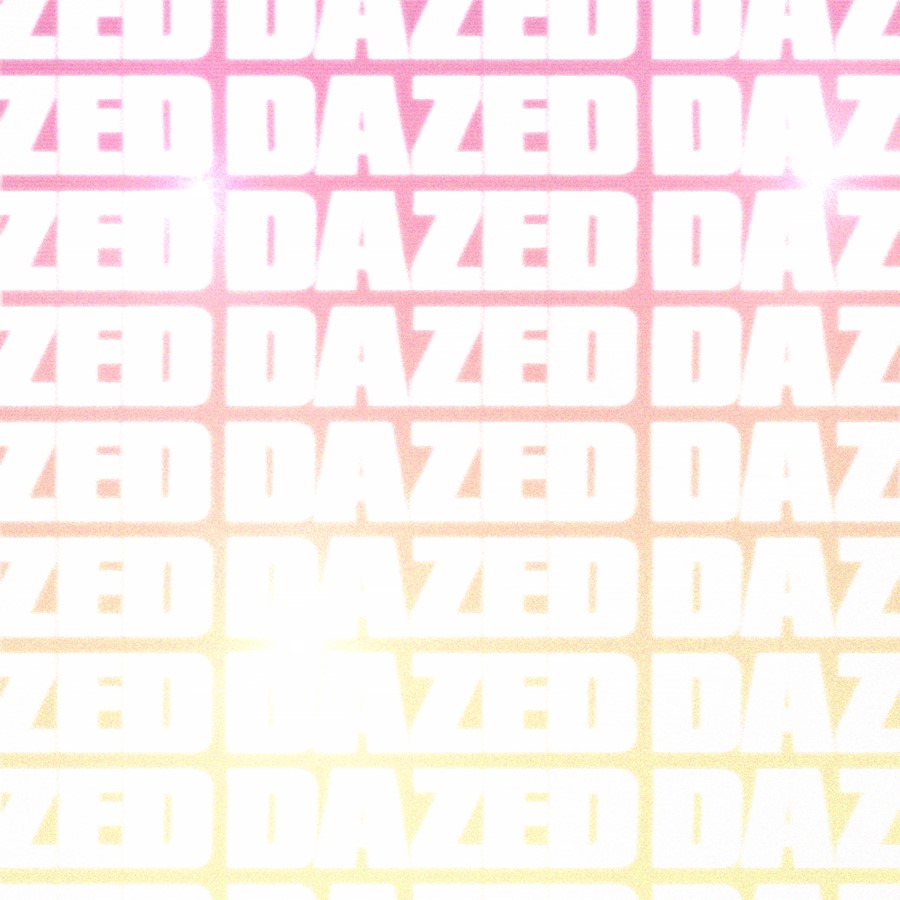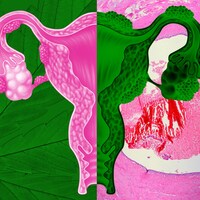Yellow blush, grey lips and lime green eyeshadow: on TikTok a growing movement is breaking all the rules and reclaiming ‘ugly make-up’
Everyone has their idea of what “bad beauty” looks like. Maybe it’s the girl who sat next to you at school with an orange stripe of unblended foundation on her jaw, or mascara applied in big gelatinous clumps, huge false eyelashes flapping in the wind like a missing pet poster. Poorly applied, unflatteringly executed, this kind of beauty is often thought of as tacky and somewhat naive.
But bad beauty can also be an artistic choice; a bold, personal statement. It is beauty that goes against the grain and chooses self-expression over conventional attractiveness, positing creativity with aggressively clashing colours, offensively clumpy lashes and obfuscating inky eyeliner that gives more racoon than siren. Bad beauty can be transgressive. It’s powerful and intimidating, eschewing the desire for conventionally prescriptive palatability for personality, authenticity and a form of expression that transcends appearance.
The question of what makes bad beauty bad is one rooted in ever-changing trends. Signs of mainstream attractiveness ricochet through the beauty world with schizophrenically evolving rules and regulations, styles falling in and out of favour as their popularity and commercial co-option waxes and wanes. However, there are certain rules which usually apply when adhering to “attractiveness” – greys and yellows, for example, have rarely been popular lip shade choices.
Now, after a decade of being wedged firmly between a Glossier counter and a KKW Sephora shelf in the aisle of Instagram Face, bad beauty is thriving on TikTok where there has been a resurgence of bewitching, transformative and transgressive make-up.
One of the creators leading the way is make-up artist Aiofe, whose striking looks play with symmetry, dissonance, juxtaposition and shape that “isn’t always meant to be pretty.” In a series titled “Weird Lip Combos”, Aiofe creates lip combinations that clash with a make-up look done for a previous video. With olive greens, burnt oranges, grey gloss and ombre blues, the lip looks speak to the new direction of bad beauty that Aoife is actively shaping.
Aoife has welcomed the rise of bad beauty although it’s sometimes been a challenge to get other people to feel the same way. “I struggled a lot at the beginning of my journey on social media because I knew what I wanted to do and had a really strong vision,” she says. “I remember someone sent me a Reddit thread of ‘ugly make-up’ a few years ago and I was all over it, filled with people laughing at me, saying how bad and ugly my work was.” As the industry has shifted and Aoife became more confident in herself, however, the response has changed. “It wasn’t until I started to push that resistance aside and became more confident in myself that I started to embrace my weird style that I started growing.”
Garance Murru is another TikTok beauty creator whose videos include metal studs, razor sharp liquid eyeliner and bleached eyebrows – notably not plucked – illuminated with pigments. For Murru, TikTok has been a source of personal refuge and discovery, both in beauty and identity. It was TikTok that helped them to realise their non-binary identity. Murru believes that bad beauty is on the rise because “people are tired of the white/cis-gendered beauty standards. Make-up isn’t about beauty or being perfect with perfect skin,” they say. “Times are tough, every form of expression is welcome.”
@aoifeartist back again with the weird lip combos ‼️LMK your fave for the final tut vid! 💚 #editorialmakeup #lipcombo ♬ original sound - aoife
This idea of personal expression outside of the confines of mainstream beauty ideals is something that resonates with Aoife as well. “I don’t do make-up with the intention of ‘beautifying’ or ‘perfecting,’” she says. “My intention is really to tell a story, create a visual message and just do things I think are fun or cool.” Aoife often gets comments from people saying her make-up looks aren’t flattering or pretty, or make her look sick. “I get frustrated that they don’t understand that my goal in life may not actually be to be more attractive or fit in. But at the same time it also makes me feel empowered for someone to point out that I don’t look good in their eyes because it’s like, ‘Good, I have a lot more to offer than that.’”
Someone who has been playing with the rules of taste and convention in beauty for decades is make-up artist and long-time pioneer of bad beauty Terry Barber. His Instagram is littered with make-up looks that reference beauty often thought of as garish, unflattering or poorly-applied – clumpy lashes, oranged-faced celebs with unblended smokey eyes, Pat Butcher’s fuschia lips. His ongoing Brexit Beauty series distils what is quintessentially British into make-up looks – from pastel pink prawn cocktail lips to “Brits Abroad” burnt blush – stepping beyond aesthetic functionality and into the realm of socio-political semiosis.
“After a decade where beauty has been forced into an ideal of cloned perfection and turned into some weird Beauty Olympics where the only influences seem to be sex dolls, Kardashian sisters or Love Island contestants, it’s natural that a new generation would want to go in the opposite direction,” he says. And it’s not just online that is going in the opposite direction. Bad beauty has also been infiltrating celebrity beauty.
While runways and magazine editorials have long been experimental and expressive with make-up, celebrities are famously boring and safe when it comes to a beauty look – moving back and forth between red carpet glam and off-duty fresh face. However, at the beginning of this year, Julia Fox’s ugly/beautiful overexaggerated black eye look announced that things were changing.
@garancemurru shapes and colors #makeup #fypシ ♬ original sound - cruella's version
Doja Cat’s recent revolutionary transmogrification epitomises the “bad beauty” mindset. After shaving off her hair and eyebrows, the singer has debuted a series of wildly creative painted eyebrow looks and full-face make-up looks courtesy of Laurel Charleston including a No Face-esque painted white look and a swirling patterned look across her face and head. In response to people criticising her new style, she wrote in a tweet: “I make hit after hit after hit… and you all want me to look fuckable, for you. Go fuck yourselves.” In a recent interview, Fox echoed this statement, saying, “I’m in my fuck men era… now I’m saying, get off my fucking back.”
Bad beauty is no longer solely concerned with defying conventionality and restrictions. Bad beauty is about inhabiting a new sphere of expression that extends beyond the limits of binaries and societal constructs. It’s about visceral honesty and commanding the power that comes from total ownership of personal narrative and creative vision. Reflecting on his days as a New Romantic club kid, Terry Barber opines, “I think it’s easy to think of bad beauty as a new punk or grunge but I don't think it’s a pastiche of those periods. It feels more about freedom than anger; an exploration of a wider pop culture shift mixed with new attitudes in expressing gender, race and sexuality.”
In an age of increasing surveillance, facial biometrics and oppression of female and minority bodies, perhaps bad beauty is a respite from hegemonic pressures, queering of beauty standards and a form of protective obfuscation. Bad beauty is an aesthetic exploration of personal presentation and projection in a shallow, sometimes cruel world.




